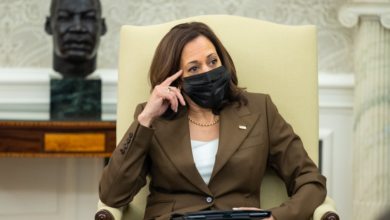The Dreaded Wage-Price Spiral Has Already Begun
Labor job actions will result in large wage increases. That means labor costs rise leading corporations to raise prices.
In the 1970s, the country experienced persistent inflation brought about initially by rising energy prices and then by a wage-price spiral. Once inflation increased, workers, mostly organized workers, demanded wage increases that exceeded the inflation rate.
If the demands were not met, organized labor called for strikes that crippled major corporations. Usually, inflation psychology has gripped public sentiment so that the public tends to support labor’s position. That forces corporations to agree to abnormally large wage increases.
The high wages cause labor costs to significantly rise for the corporation. To maintain profitability, they must raise prices, and usually by as much or more than the wage increase. That causes even higher inflation. The higher inflation results in labor demanding even higher future wage increases leading to the wage-price spiral.
This happened throughout the 1970s and into 1980. By 1980, annual wage increases often approached 10%. Eventually, the inflation rate peaked at 13.5%. The Fed was the only entity that could stop inflation. It was forced to raise interest rates to double-digit levels. That did eventually break the wage-price spiral, but it did so by causing a deep and severe recession.
By more carefully monitoring the growth in the money supply and by trying to control deficit spending, long-term inflation came tumbling down. By 1992, inflation fell to 3% and stayed mostly at that level or less until 2020, when inflation fell to 1.5%.
In 2021, massive increases in government deficit spending and a shockingly irresponsible monetary policy that vastly expanded the money supply and kept interest rates near zero resulted in rapidly rising inflation.
Finally, by June 2022, the Fed reversed its shockingly irresponsible monetary policy and started to aggressively raise interest rates. By then annual inflation peaked at 9.1%.
This year, labor reacted to the high inflation by demanding much higher wages. Corporations were in disbelief that wage increase demands of nearly 10% annually were presented. To avoid huge increases in labor costs, which would have to be passed along to consumers, corporations resisted, so organized labor went on strike.
Today we see numerous and very large labor actions. In June, Bloomberg reported average negotiated wage increases reached 7%. That’s the largest wage increase since Bloomberg began tracking this in 1988.
UPS settled with its workers and avoided a strike. By the end of the five-year contract, their drivers will earn an average of $170,000 per year in wages and benefits. American Airlines pilots were able to get roughly a 46% increase in compensation in their four-year deal. Pilots working for other airlines will demand similar wage increases.
In the healthcare sector, Kaiser Permanente’s 85,000 healthcare employees are seeking a contract that will give them 7% wage increases in each of the next four years. They also want the minimum wage for unskilled workers to increase to $25 per hour.
United Auto Workers are striking all three major domestic car companies. They seek a 40% wage increase for their four-year contract.
Once non-organized workers see the magnitude of the annual wage increases, they will demand something similar from their employers. Because labor markets are tight, most employers will be forced to comply.
That means labor costs will increase significantly. To be profitable, those wage increases will be passed on to consumers, increasing long-term inflation and causing the wage-price spiral to escalate.
The federal government is completely responsible for this problem. To fix this now, federal government spending must be dramatically reduced. And that doesn’t mean the increase this year is smaller than last year. It means spending must be reduced.
The Fed must continue to raise interest rates. It erred when it stopped the 75 basis point increases at the end of last year. And erred again when it paused the interest rate increases last month.
The wage-price spiral has started. It must be stopped as soon as possible, or we will experience what happened in the late 1970s and the early 1980s.
Then only a severe recession will reduce inflation.
Agree/Disagree with the author(s)? Let them know in the comments below and be heard by 10’s of thousands of CDN readers each day!



